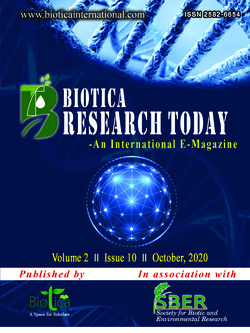
Biofloc Technology: An Overview and Its Application
Anwesha Ray
College of Fisheries, Odisha University of Agriculture and Technology, Surya Nagar, Bhubaneswar, Odisha (751 003), India
Biswajit Mohanty*
College of Fisheries, Central Agricultural University (Imphal), Lembucherra, Agartala, Tripura (799 210), India
DOI: NIL
Keywords: Aquaculture, Biofloc, Nutrient recycling, Fisheries
Abstract
The growing demand for pertinacious food, in particular animal protein, is responsible for the growth of animal husbandry and fisheries. But now, due to the over-exploitation of fisheries and environmental pollution through the emission of toxic metabolites, aquaculture faces both environmental and economic un-sustainability. One of the innovative waste management and nutrient retention technologies is Biofloc Technology (BFT) that offers a solution to the problem. In aquaculture ponds, Biofloc Technology removes toxic metabolites and helps to retain more nitrogen in the form of fish or shrimp biomass through the production of microbial mass protein. BFT is a C/N ratio optimization technology. Microbial flocs also have a probiotic effect on the environment through the production of poly β-hyroxy butyrate. Quorum sensing and co-aggregation of microbial groups determines the quality of floc and also helps to eliminate or suppress the influence of pathogens in the aquaculture system.
Downloads
not found
Reference
Avnimelech, Y., 2009. Biofloc technology. A practical guide book. The World Aquaculture Society, Baton Rouge, 182.
Crab, R., Defoirdt, T., Bossier, P., & Verstraete, W., 2012. Biofloc technology in aquaculture: beneficial effects and future challenges. Aquaculture, 356, 351-356.
Hargreaves, J. A., 2013. Biofloc production systems for aquaculture (Vol. 4503, pp. 1-11). Stoneville, MS: Southern Regional Aquaculture Center.
